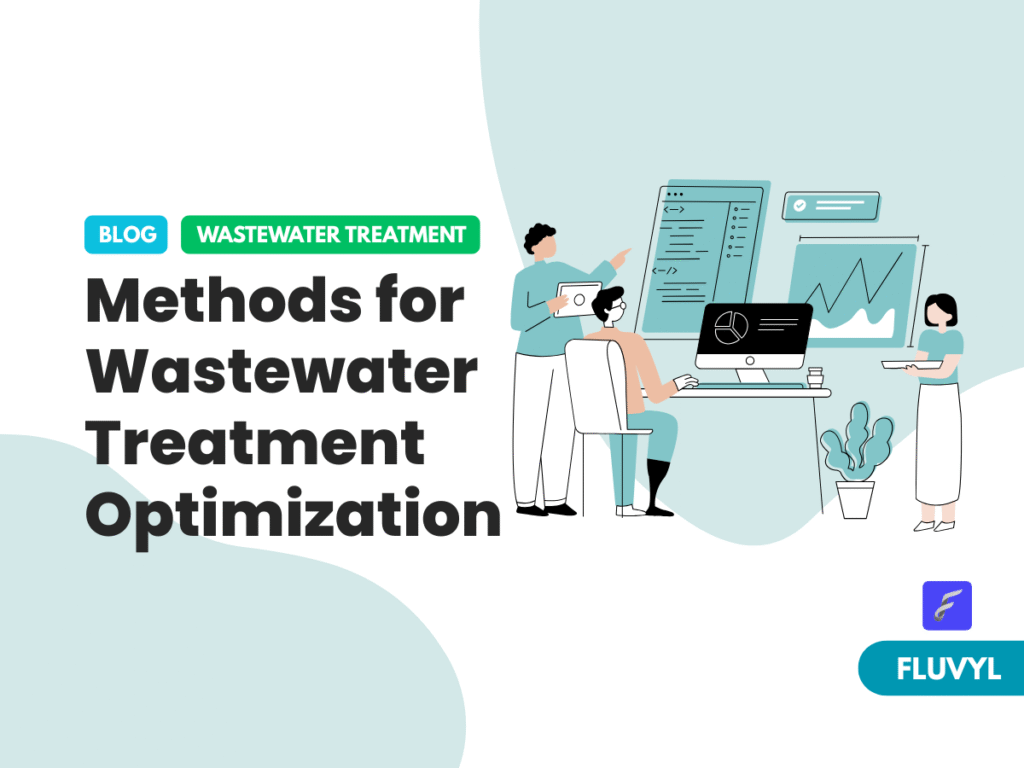10 Proven Methods for Wastewater Treatment Optimization

By Fluvyl, updated Apr 07, 2025

Effective wastewater treatment is crucial for safeguarding public health, preserving ecosystems, and meeting regulatory standards. In an era of rising environmental concerns and stricter discharge limits, Wastewater Treatment Optimization has become more essential than ever. By refining processes, integrating smart technologies, and rethinking system design, treatment plants can improve efficiency, reduce costs, and minimize their environmental impact. In this article, we explore 10 proven methods for Wastewater Treatment Optimization that can help you modernize your operations.
1. Implement Real-Time Monitoring and Control Systems
Real-time data is the backbone of smart treatment facilities. Using sensors and SCADA (Supervisory Control and Data Acquisition) systems, operators can monitor parameters such as pH, DO (dissolved oxygen), TSS (total suspended solids), and flow rate.
Benefits:
- Rapid response to fluctuations
- Reduced chemical and energy consumption
- Data-driven decision-making
Wastewater Treatment Optimization through real-time monitoring ensures proactive, rather than reactive, plant operations.
2. Upgrade Aeration Systems
Aeration is one of the most energy-intensive processes in a treatment plant. Optimizing this step can yield substantial energy savings.
Strategies:
- Use fine bubble diffusers
- Implement variable frequency drives (VFDs)
- Adopt demand-based aeration control
Upgrading aeration systems is a direct path to Wastewater Treatment Optimization by reducing energy use and enhancing biological treatment efficiency.
3. Optimize Sludge Handling
Efficient sludge management is a cornerstone of operational excellence. This includes thickening, digestion, dewatering, and disposal.
Key improvements include:
- Implementing advanced dewatering techniques
- Using anaerobic digestion for energy recovery
- Monitoring solids content in real time
Better sludge handling not only lowers disposal costs but also supports the broader goals of Wastewater Treatment Optimization.
4. Use Advanced Process Control (APC) and Machine Learning
Advanced Process Control systems use predictive algorithms to adjust operations dynamically. Machine learning can further enhance decision-making by analyzing large datasets.
Advantages:
- Improved process stability
- Automated responses to load changes
- Increased compliance with discharge standards
Incorporating APC and AI is a cutting-edge approach to Wastewater Treatment Optimization, ensuring smarter and more adaptive plants.
5. Minimize Inflow and Infiltration (I&I)
Unwanted stormwater and groundwater entering the sewer system increase the load on treatment plants.
Tactics for I&I reduction:
- Regular inspection and maintenance of sewer lines
- Rehabilitation of aging infrastructure
- Use of trenchless technologies for pipe repair
Reducing I&I helps in Wastewater Treatment Optimization by maintaining consistent influent characteristics and avoiding capacity overloads.
6. Improve Chemical Dosing Accuracy
Chemicals are used for disinfection, coagulation, and pH adjustment. Overdosing leads to high costs and environmental issues, while underdosing compromises treatment.
Optimization methods include:
- Automated dosing systems
- Inline analyzers
- Real-time feedback loops
Accurate chemical dosing is essential for achieving Wastewater Treatment Optimization by balancing cost, efficiency, and compliance.
7. Integrate Energy Recovery Solutions
Modern wastewater treatment facilities are increasingly becoming resource recovery centers.
Energy recovery options:
- Anaerobic digestion of sludge
- Biogas production and utilization
- Heat recovery from effluent
Energy integration contributes to Wastewater Treatment Optimization by turning waste into resources and lowering operational costs.
8. Employ Membrane Filtration Technologies
Membrane bioreactors (MBRs) and other filtration methods offer higher quality effluent and reduced footprint.
Types of membrane technologies:
- Microfiltration
- Ultrafiltration
- Nanofiltration and Reverse Osmosis (RO)
These systems allow for reuse and recycling of water, a crucial component of Wastewater Treatment Optimization in water-scarce regions.
9. Train and Certify Plant Operators
Even the most advanced technology is ineffective without skilled operators. Training ensures that staff can interpret data, maintain equipment, and respond to emergencies.
Best practices:
- Regular workshops and certifications
- Cross-training to build redundancy
- Knowledge sharing across facilities
Empowered personnel play a central role in achieving Wastewater Treatment Optimization.
10. Conduct Regular Audits and Benchmarking
You can’t improve what you don’t measure. Regular audits help identify inefficiencies and track progress.
Key audit areas:
- Energy consumption
- Sludge generation
- Chemical usage
- Compliance rates
Benchmarking against similar facilities offers insights and fosters a culture of continuous Wastewater Treatment Optimization.
Final Thoughts
Wastewater Treatment Optimization is not a one-size-fits-all approach. It involves the integration of technology, process refinement, workforce training, and continuous monitoring. As water scarcity intensifies and environmental regulations tighten, treatment plants must evolve into intelligent, adaptive systems.
By implementing the ten methods discussed here, facilities can ensure they remain compliant, cost-effective, and environmentally responsible. Whether you manage a municipal facility or an industrial treatment plant, these strategies provide a roadmap to effective Wastewater Treatment Optimization.
